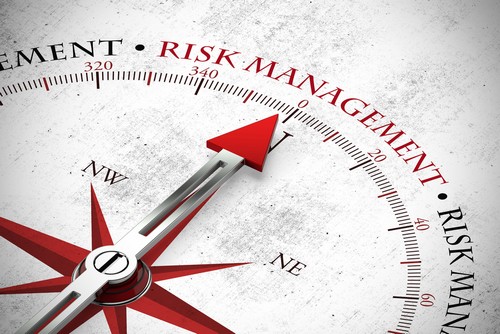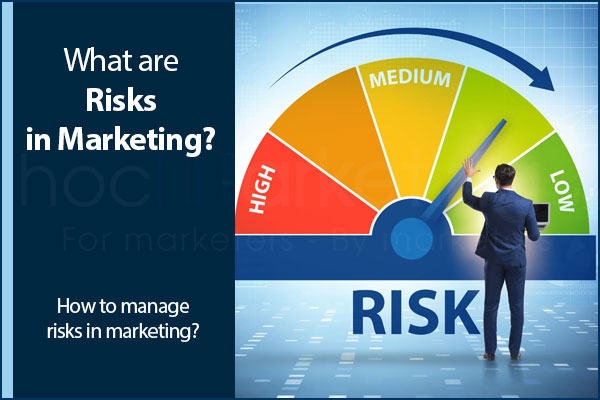
The Significance of Risk Management

Risk management involves identifying and analyzing potential threats or risks that could impact a company's assets It is important for mitigating potential losses and ensuring business continuity
Risk management involves identifying and analyzing potential threats or risks that could impact an organization's finances and profits. It then requires the strategic allocation of resources to minimize or control the impact of unforeseen events, while also maximizing opportunities for growth and success.
What is risk management?
The practice of risk management involves the identification, evaluation, and mitigation of potential threats to an organization. These risks can stem from a variety of sources, including financial instability, strategic management issues, legal obligations, accidents, and natural disasters. Additionally, risk management is essential when making crucial investment decisions, as it requires analyzing and accepting or mitigating uncertainty associated with the investment. Ultimately, risk management involves proactive analysis and preparation to minimize potential negative impacts on the organization.
Precautionary measures are taken after a thorough evaluation of potential risks based on various factors. Effective risk management involves identifying and mitigating risks in a portfolio through diversification. In the business world, there are numerous types of risks that can be encountered, particularly in the realm of investments.
Economic factors, competition, and market volatility are just a few examples of factors that can impact risk management. Entities, such as a company's position and capital, also play a crucial role in determining the risks associated with an investment. For instance, let's consider the hypothetical company 'ABC' with $10,000 in assets. Through risk analysis, it may be determined that investing more than $5,000 in a highly volatile stock would not be a wise decision for the organization or its stakeholders.
Businesses must prioritize the daily assessment of their risks in order to ensure their success. By referring to previous risk analyses, companies can make informed decisions about which securities to invest in and which ventures to undertake. Risk management is especially crucial when considering the launch of new product lines or expanding factories, as it allows for an accurate assessment of potential threats to investment.
Risk management is a ubiquitous practice in the financial world, with investors often opting for low-risk bonds instead of riskier corporate bonds. Financial instruments such as options, futures, and money managers employ strategies like portfolio diversification to effectively manage and mitigate risks. However, inadequate risk management can lead to severe consequences that can impact businesses, individuals, and even the economy.
Examples of risks management
After 5 years of successfully growing his company, John is considering investing in Apple stocks. However, with high stock prices and limited potential dividends in the short term, he wants to make an informed decision and conduct a risk analysis before investing. Additionally, he wants to ensure that he insures the amount he invests.
Investing in Apple stocks has been deemed as a risky move for novice investors in the current market, as per the risk assessment. Moreover, the high stock prices further limit the possibility of short-term dividends, thus requiring a significant amount of remaining savings to be invested for adequate returns. Consequently, it has been concluded that investing in Apple stocks would not be a wise decision, and instead, the focus would be on investing in new business equipment to boost sales.
What are the various standards of risk management?
In recent years, regulatory compliance rules and risk management plans have become increasingly important for government organizations and industries. These plans outline how risks are identified, assessed, and managed, as well as the policies and procedures for executing them.
Within large organizations and businesses, the board of directors is typically responsible for overseeing the accuracy of the enterprise risk management process and reporting on its effectiveness. These risk management strategies have become crucial components in ensuring the long-term success of a business.
These days, there are various organizations such as the 'National Institute of Standards and Technology' and ISO, that work towards identifying potential threats, analyzing specific vulnerabilities, determining risks and devising ways to mitigate them. Once this comprehensive process is complete, the organizations can then implement risk reduction strategies as per their predetermined plan.
The ISO 31000 principles offer a risk management framework that can be utilized by companies of any size or industry. Its primary goal is to enhance the likelihood of achieving goals and improving the ability to identify both opportunities and threats. Additionally, it allows for effective allocation and utilization of available resources in risk management.
What is the importance of risk management?
It is important to note that while ISO 31000 provides guidance for both external and internal risk audits, it cannot be used for certification purposes. Additionally, it enables companies to benchmark their risk management practices against internationally recognized standards.
Effective risk management is crucial for both profit and nonprofit organizations. Unexpected events can cause significant damage to an organization if they are not properly prepared for. Operational risks, such as loss of funds, staff injury, and natural disasters, must be managed to ensure the organization's survival. This is where risk management proves invaluable.
Proper risk management is crucial as it serves as a safeguard for your organization or business in unforeseen circumstances. By anticipating and preparing for unexpected events, risk management minimizes potential risks and eliminates unnecessary financial burdens. Effective implementation of risk management can not only save you money, but also safeguard the future of your organization.
Identifying potential risks and evaluating their impact is a crucial aspect of effective risk management. By conducting a thorough assessment, businesses and organizations can develop strategies to minimize the impact of these risks, or even eliminate them altogether. This approach enables them to better understand the true level of risk they face and take proactive measures to cope with any potential consequences.
What are the advantages of risk management?
Proper risk management offers numerous benefits, including the preservation of resources, income, time, assets, and property. By mitigating potential risks, fewer claims arise, which leads to greater efficiency and financial savings.
Creating a secure and safe environment for staff, customers, and visitors is crucial. By doing so, legal liabilities can be minimized, which in turn increases operational stability.
Conclusion
Effective risk management is crucial for the success of any organization, be it for-profit or non-profit. Owners and managers must prioritize risk management to prevent potential damages in the future. With proper risk management strategies in place, organizations can protect their assets, reputation, and overall sustainability.

















